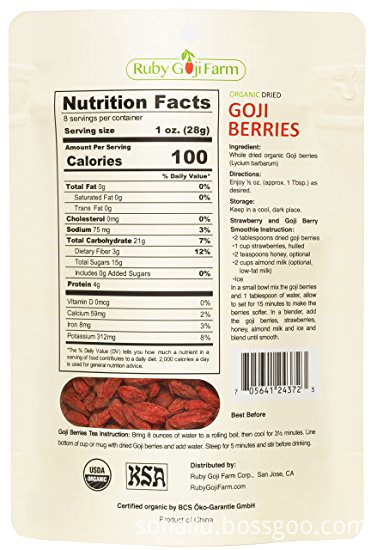The Marine Life Genetic Engineering Laboratory under the leadership of Xu Wei, Academician of the Third Institute of Oceanography of the State Oceanic Administration (graduated in 1951, established in 1951), was the first person in the world to decipher the genetic code of shrimp disease virus. It was released on January 10 by the Xinhua News Agency. Later, in the past few days, the laboratories successively received telephone, telex, and e-mail from domestic and foreign counterparts, all of which expressed great concern about this major achievement. The reason why this result has caused great repercussions at home and abroad is that it will bring about a turning point for the shrimp farming industry that has long been affected by the virus. The application of marine genetic engineering technology has finally brought out the “culprit†of the shrimp disease, the white spotted baculovirus, and deciphered the genetic code. The results of the analysis show that this is a virus consisting of about 300,000 base pairs, the largest animal virus known so far in the world, and is likely to be a new virus. With the deciphering of this virus code, it laid the foundation of molecular biology for the prevention and treatment of shrimp disease, and also opened the way for the complete prevention and treatment of this virus disease. In 1993, shrimp epidemics broke out across the country, and the shrimp aquaculture industry in the coastal areas of Xiamen and Fujian Province was also catastrophe. In the past few years, the country’s economic losses have reached several billion yuan. The pathogen, shrimp white spot baculovirus (WSBV), has a strong infection rate and the mortality rate is as high as 90% to 100%. Once an outbreak occurs, the shrimp industry will be regionally "destroyed." Therefore, revealing the genetic structure of this virus and understanding the mechanism of viral infection and proliferation is the key to achieving a fundamental prevention and control strategy. However, in the current situation where the prawn cell system culture has not been successful, the virus can be directly isolated and purified directly from the diseased shrimp tissue. This has always been a painstaking and unsolved technical challenge for domestic and foreign scientists. It is understood that the composition of diseased shrimp is very complex. In particular, a protease is released from the diseased shrimp tissue, which can rapidly degrade the virus. In addition, shrimp chromosomal DNA is also easily attached to the virus and difficult to separate. Therefore, scientists must find ways to solve it. With these viruses hidden in the "siege" to start a tough fight - from the virus-purified shrimp tissue extraction and purification of virus. Who can use genetic technology to preemptively decipher the structure of the virus? Since the 1990s, scientists from the United States, Japan, France, and our country’s Taiwan region have quietly launched a competition for marine biology genetic engineering technology. As the Marine Biological Genetic Engineering Laboratory under the leadership of Prof. Xu Wei of Ocean Three, Key Laboratory of the State Oceanic Administration, the pair of shrimps has been under the support of the Ministry of Science and Technology, the State Oceanic Administration and the provincial and municipal science commissions since 1994. Viral genome research. After the establishment of the project, it was included in the national “Eighth Five-Year Plan†emergency research project and the key scientific and technological projects in Xiamen City. In 1998, it was listed as a national 863 project, and both were funded. From the shrimp breeding base to the laboratory, Professor Xu Wei led the scientific and technical personnel to a long and arduous journey of research and exploration. In order to be able to sample the live shrimp infected with the virus in time, they set up a disease report information network with shrimp disease control experts and shrimp breeding production bases of the Provincial and Municipal Fisheries Research Institutes. Once they understand the occurrence of diseases, they quickly rush to the scene. Over the past few years, shrimp farmers’ farms from Tongan to Zhangpu and other places have been reported to the disease. Regardless of the harsh winter, they will rush to the scene. When the samples were returned, they couldn't attend the labor of the journey and immediately went straight to the laboratory. The sampled shrimps were subjected to experimental treatment, often picking up light nights. Their laboratories are in a state of provocation during the high incidence of shrimp disease to ensure that the diseased shrimps are sampled in the laboratory and they can enter experimental operations. There is no smooth road to climb the peak of science. Yang Feng, a principal researcher of the research group, told reporters that they have experienced countless failures, and that each time they fail, they have to start from scratch and re-sample and experiment again. In this case, Prof. Xu Wei always encourages everyone: “We will do better next time.†She was sampled from the shrimp breeding base to the laboratory and she was instructed on the spot. As a lab leader, she is adept at harnessing the creativity of everyone and brainstorming so that every member of this united and collaborative group has the best of creativity. They gained revelations from failures again and again, re-experimenting again and again, and thus step by step to the threshold of success. The "Shrimp Virus Genome Study" finally achieved a breakthrough at the end of 1996. They found that the addition of a protease inhibitor when extracting the shrimp baculovirus prevented the virus from degrading. In addition, a nuclease was added to remove the chromosomal DNA of shrimps attached to the virus and the virus yield was increased. A new method for the rapid and simple purification of large amounts of pure baculovirus DNA was established. It was the first to be isolated and purified in the world. Batch of complete viral genomic DNA. In 1997, they continued to build a genomic library and determined 1500 viral genome clones, accounting for 90% of the total length of the genome. At the beginning of last year, the laboratory's shrimp virus sequencing work entered the sprint phase toward the end goal. They were also joined by the National Ministry of Science and Technology Bioengineering Center, Northern Gene Center, and Kikan Biotechnology Co., Ltd. and were completed at the end of June. Whole genome sequencing work. This historic breakthrough, with its academic level, is at the forefront of the world, and the data shows that at this time, the international counterparts only completed the 1% sequencing task of the shrimp virus. Professor Xu Wei, who has just been elected as academician of the Chinese Academy of Engineering, said in an interview with reporters that since our research on this topic is a major problem arising from production, the ultimate goal is to solve problems and service production. After the virus genome obtained the cloned fragment, the laboratory applied the gene structure and method to successfully establish a rapid detection technology for shrimp baculovirus and developed a “kit†for use with specialized instruments. Virus detection can be performed on the water environment, sediment, shrimp, broodstock live, and bait, which can effectively control the shrimp culture environment and prevent virus infection. Since 1997, the kit detection technology has been widely used in the coastal shrimp culture areas in China and has achieved good results.
organic planting and R&D, and have delivered products to over 20 countries including NA and EU.
Goji Berry package 8oz is products of Ruby Goji Farmof branch office of Wolfberry in USA.
Ruby Goji Farm is has been working on providing organic dried Gojis and processed Goji foods to
customers worldwide for 18 years. As the first certified provider of organic Goji berries, we focus onorganic planting and R&D, and have delivered products to over 20 countries including NA and EU.
We have already taken over 70% Goji Berry market of U.S.


Goji Berry Plant, Organic Dried Goji Berries, Goji Berry package 8oz
Ningxia Wolfberry Goji Industry Co.,ltd , http://www.nx-wolfberry.com